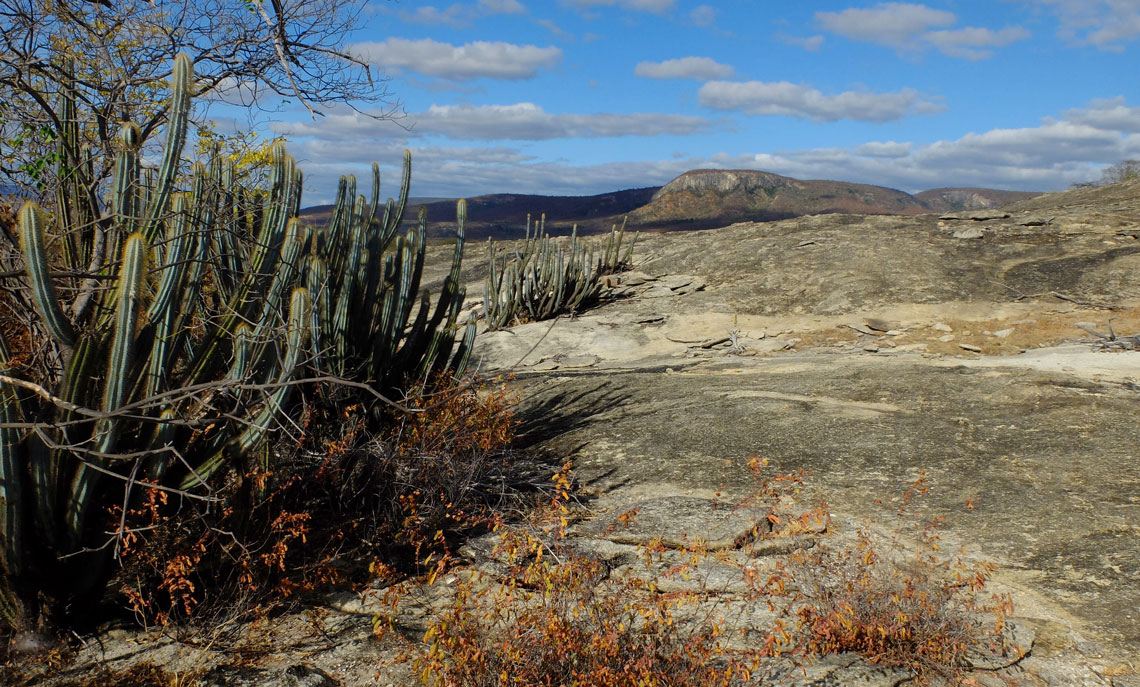
Daniela Zappi Inselberg in Caatinga: a unique species that is not well protectedDaniela Zappi
A team led by botanist Luísa Azevedo of the Federal University of Minas Gerais (UFMG) found 4,498 species of plants that live in 151 areas of eastern Brazil — stretching from Rio Grande do Sul to Ceará — characterized by exposed rocks, known as rocky outcrops. The researchers created a classification for six groups of plants that live on the rocks: two that live on inselbergs (isolated rock hills) — one in the Atlantic Forest and the other in the Caatinga (semiarid scrublands); two from rupestrian grasslands — quartzite and ferruginous; high-altitude plains; and limestone outcrops. The exposed rocks are each home to distinct sets of plants: 69% of species live in only one type of environment. The evergreen Paepalanthus nigrescens, which produces balls of white flowers, grows in quartzite rupestrian grasslands, while the orchid Cattleya caulescens, whose flowers range from pale pink to magenta, prefers ferruginous rupestrian grasslands. “Rocky outcrops should be seen as distinct ecosystems that urgently need to be protected, but our current network of conservation areas does not protect the heterogeneity of plants on rocky outcrops,” says Azevedo (Pesquisa FAPESP issues 218 and 259; Journal of Systematics and Evolution, February).
Republish